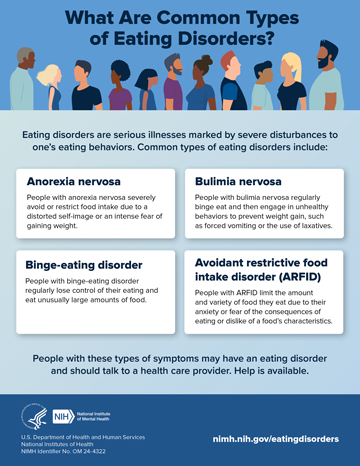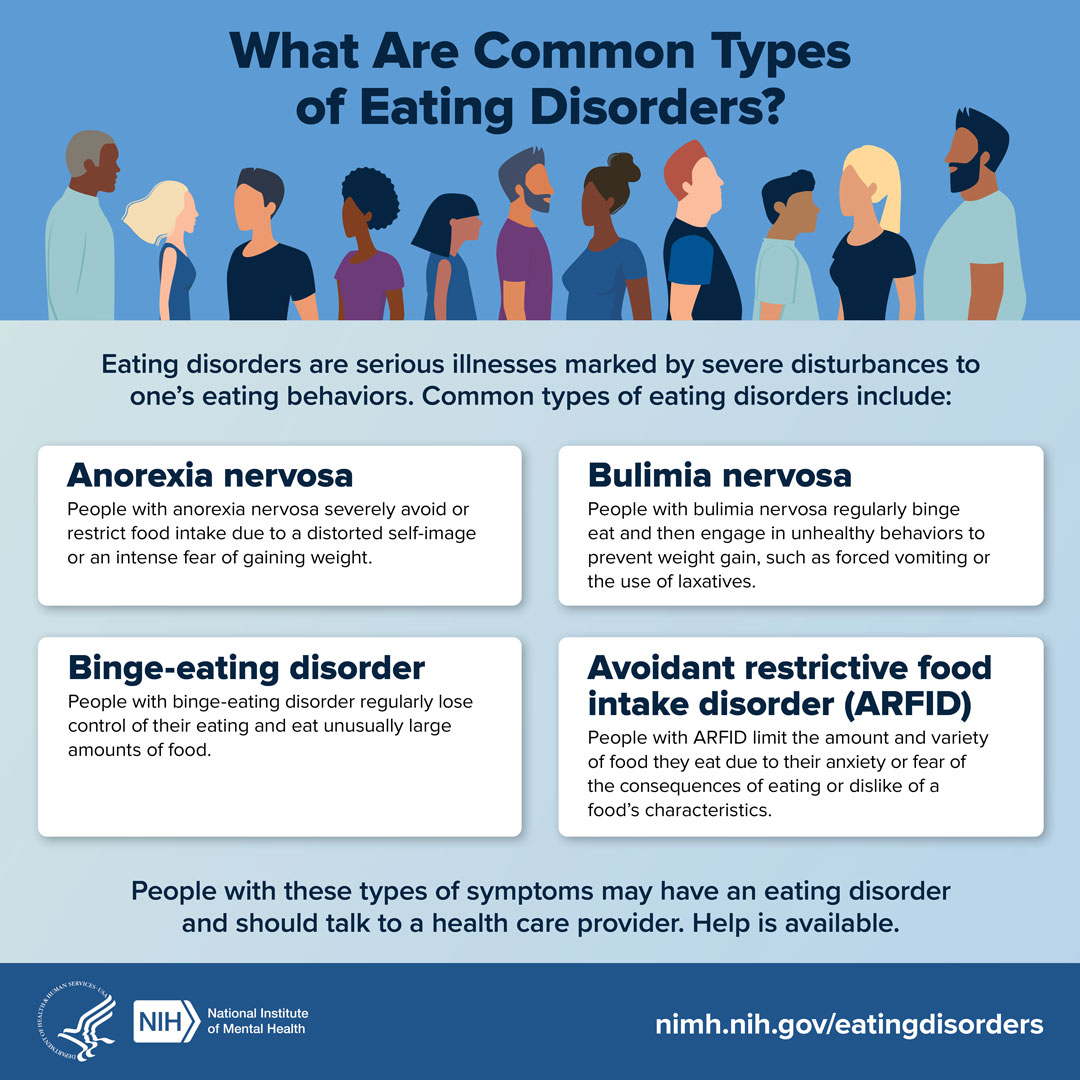What Are Common Types of Eating Disorders?
Eating disorders are serious illnesses marked by severe disturbances to one’s eating behaviors. Here are common types of eating disorders.
Anorexia nervosa
People with anorexia nervosa severely avoid or restrict food intake due to a distorted self-image or an intense fear of gaining weight.
Binge-eating disorder
People with binge-eating disorder regularly lose control of their eating and eat unusually large amounts of food.
Bulimia nervosa
People with bulimia nervosa regularly binge eat and then engage in unhealthy behaviors to prevent weight gain, such as forced vomiting or the use of laxatives.
Avoidant restrictive food intake disorder (ARFID)
People with ARFID limit the amount and variety of food they eat due to their anxiety or fear of the consequences of eating or dislike of a food’s characteristics.
People with these types of symptoms may have an eating disorder and should talk to a health care provider. Help is available.
Learn more about eating disorders.
U.S. Department of Health and Human Services
National Institutes of Health
NIMH Identifier No. OM 24-4322
Share the Infographic on Social Media
Common Types of Eating Disorders
Common types of eating disorders include anorexia nervosa, binge-eating disorder, bulimia nervosa, and avoidant restrictive food intake disorder. Read more about each of these eating disorders: https://go.nih.gov/dkZX06N #shareNIMH
Copy post to clipboard
Find more resources to share on social media.
Reprints
The information in this publication is in the public domain and may be reused or copied without permission. However, you may not reuse or copy images. Please cite the National Institute of Mental Health as the source. Read our copyright policy to learn more about our guidelines for reusing NIMH content.


